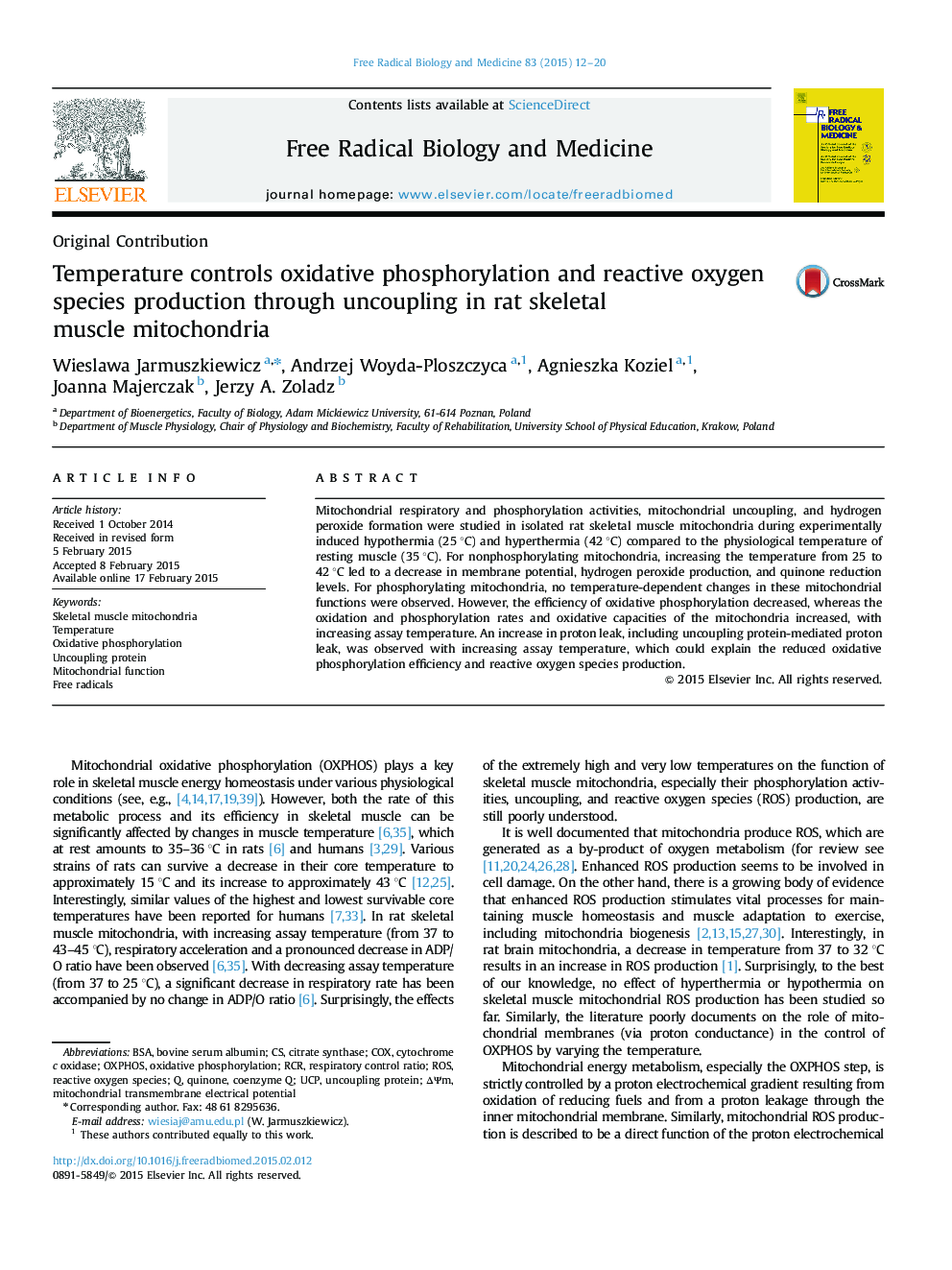| Article ID | Journal | Published Year | Pages | File Type |
|---|---|---|---|---|
| 1907949 | Free Radical Biology and Medicine | 2015 | 9 Pages |
•Increase in temperature augments cytochrome c oxidase and citrate synthase activities.•Temperature enhancement reduces membrane potential and quinone reduction levels.•Temperature increase decreases mitochondrial ROS production and OXPHOS efficiency.•Temperature-induced proton leak influences ROS production and OXPHOS efficiency.
Mitochondrial respiratory and phosphorylation activities, mitochondrial uncoupling, and hydrogen peroxide formation were studied in isolated rat skeletal muscle mitochondria during experimentally induced hypothermia (25 °C) and hyperthermia (42 °C) compared to the physiological temperature of resting muscle (35 °C). For nonphosphorylating mitochondria, increasing the temperature from 25 to 42 °C led to a decrease in membrane potential, hydrogen peroxide production, and quinone reduction levels. For phosphorylating mitochondria, no temperature-dependent changes in these mitochondrial functions were observed. However, the efficiency of oxidative phosphorylation decreased, whereas the oxidation and phosphorylation rates and oxidative capacities of the mitochondria increased, with increasing assay temperature. An increase in proton leak, including uncoupling protein-mediated proton leak, was observed with increasing assay temperature, which could explain the reduced oxidative phosphorylation efficiency and reactive oxygen species production.
